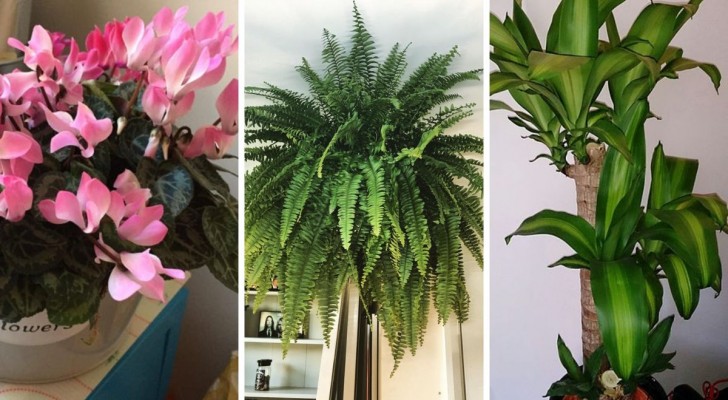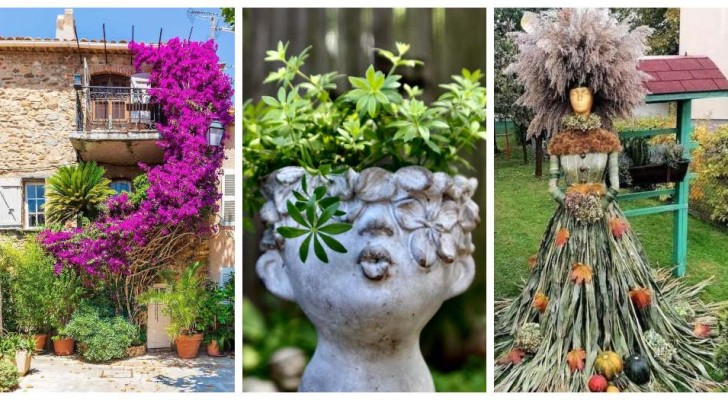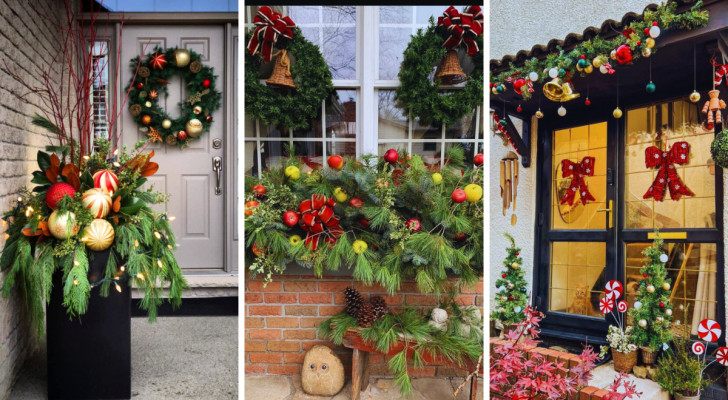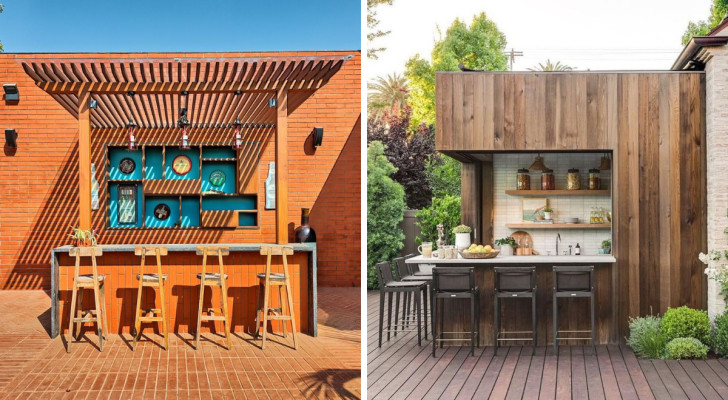The most beautiful plants to attract bees and butterflies in the garden or on the terrace
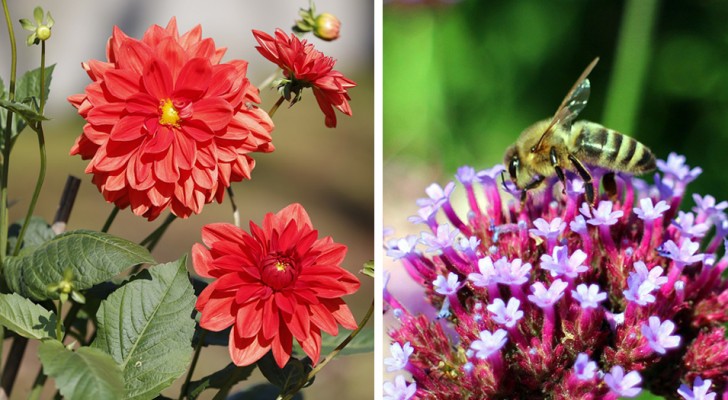
Bees and pollinating insects are fundamental and essential for the health of our planet, therefore also ours. Suffice it to say that more or less a third of all the food we eat in life is due to the activity of these eager animals. All over the world, fruit, vegetable and flower crops, therefore also those on which the livelihoods of animals in farms depend, depend on pollination. Cotton plants also need these insects.
When bees visit an apple blossom in search of nectar and pollen, they remain covered with that yellow powder (pollen, in fact), which they then transfer to the other flowers they visit: pollination is just that, the transfer of pollen from one flower to another of the same species, which is fertilised and the fruit and seed production process begins. When plants can't do it themselves, pollinating insects do it.
Unfortunately, air pollution and electromagnetic fields generated by the internet networks that are part of our daily life are decimating the populations of these animals in the world, and the pesticides of intensive cultivation and the deforestation of huge areas of the planet, as well as the desertification that hit previously much more fertile areas, contribute to the situation.
For this reason, an awareness of the importance of bees and butterflies has begun to spread - and of all the various other species that contribute so much to the survival of our ecosystem - even in the world of gardening: if you want to plant flowers in a pot on the balcony, on the windowsill, on a terrace or in the garden, why not choose the varieties that attract these types of animals? So instead of plants with beautiful flowers but "useless" for pollination, wouldn't it be better to choose those with beautiful, fragrant and greedy flowers for bees? The choice is wide, and below are some of them.
via daviddomoney.com
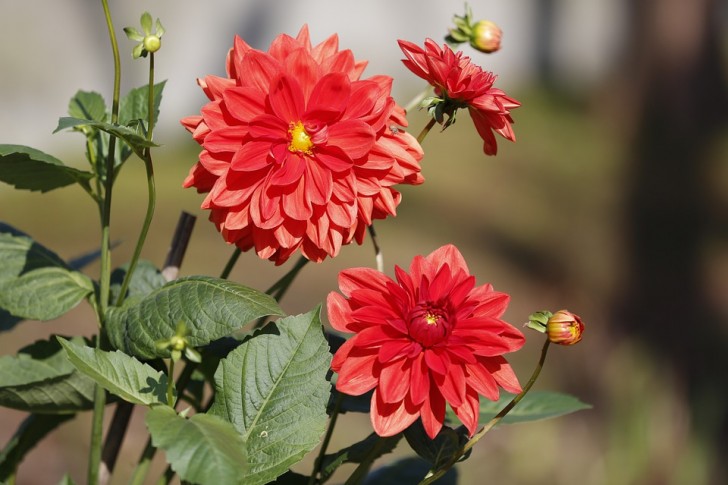
Lavender
Lavender is a resistant, fragrant plant, beautiful all year round and has excellent calming and relaxing properties. Plant it along a path in the garden, so that every time you pass or touch it you will feel its intoxicating scent.
It is a plant that loves the heat, so it should be grown in places where it is reached by the sun for as many hours as possible a day, in a corner (or balcony) facing south, west or east. If you plant it in calcareous and well-dissolved and draining soil, you will guarantee it the ideal habitat, being able to enjoy the plant even in periods of drought or very high temperatures
Dahlia
Dahlias are extremely decorative plants, with truly spectacular inflorescences, and can give life to truly breathtaking views in any garden or terrace. There are many different sizes and shapes, but if you want the most attractive ones for bees it is better to choose those with single or semi-double flowers, because those with many petals are generally hybridized so as not to have parts that produce pollen, or the petals. they are so thick that the bees can't get inside to find their booty. You can alternate purely decorative varieties with those useful for pollinators, if you don't want to give up the glance.
When exposed in full sun, in areas facing south-west or south-east, sheltered from strong winds, and with a light soil, rich in fertilizer and cool in summer, these perennials will do practically everything on their own, giving spectacular blooms. - and precious feasts for bees.
They are in fact tubers, so they don't need too much water otherwise they risk rotting. The best way is to prepare the soil even in autumn, by digging and adding a little manure. When spring arrives, by May, plant the bulbs about 10 or 15 cm deep.
Since there are so many varieties, with maximum heights ranging from 20 centimeters to 2 meters, the best combination is always found depending on the space available, including pots.
Wallflower
Wallflowers (Erysimum cheiri) are small bushes that bloom in spring and summer. The flowers are very showy (from yellow to red, purple, brown) and have a delicious vanilla scent. Their compact habit and maximum height of 20-25 cm often makes them the best choice for borders of flower beds that follow the avenues.
The soil must be fertile and well-drained, even calcareous or slightly sandy, and they love the sun (otherwise they would produce few flowers), so place them in the south, west or east, where they don't have too many plants to shade above. Flowering usually ends in August, when it is good to trim the branches with dried flowers to stimulate the growth of the plant. They don't need a lot of water - only wet the soil around the collar when it's dry, especially if they're in pots.
It also seems that in the Middle Ages this flower was loved by minstrels, who wore a twig pinned to their chest during their traveling exhibitions: they were considered a symbol of lasting affection and capable of resisting misfortunes.
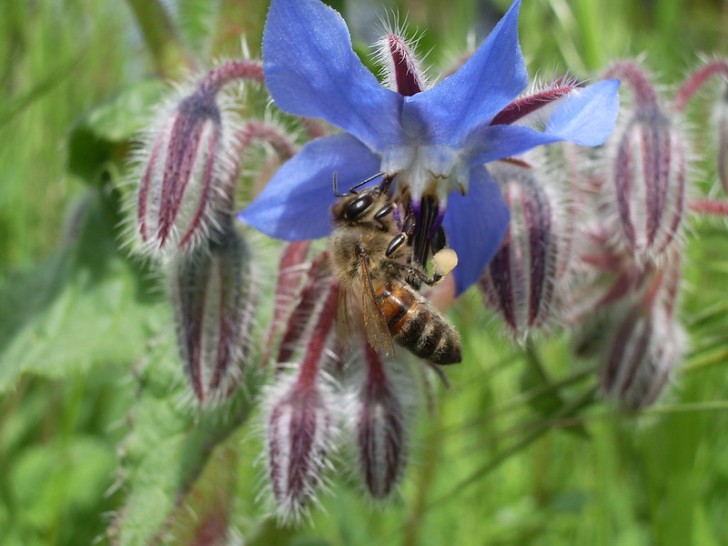
Borage
It is an aromatic herb of the Mediterranean, which also grows in the undergrowth or even on the sides of roads, and produces large, fluffy leaves, excellent for cooking, as well as beautiful, velvety blue-violet flowers in the shape of a star.
Being a spontaneous plant, it needs very little care, and within a few years it will have propagated by itself, as self-sowing.
It grows in the sun or in partial shade, in places slightly sheltered from the currents, and can be seen both in the rich soil of the undergrowth and in the cracks of low walls and road edges, therefore not demanding even in terms of soil. It must be watered only occasionally, when the soil is dry even under the surface layer. If grown in pots, use a layer of expanded clay at the bottom, then mix soil and sand or vermiculite.
Foxglove
Digitalis plants can grow almost everywhere, both in full sun and in the shade, and indeed they prefer a shady area at least in the hottest hours to prevent direct sunlight in the hottest periods from damaging them.
They produce long inflorescences ranging from pink to violet or blue, with tubular flowers gradually smaller towards the tip and all with a spotted throat. They are beautiful therefore when they form a stain, but also when observed closely.
Unmissable in English cottages, they can be grown easily at many different latitudes, and produce many seeds, to be harvested and re-sown at the end of summer or as soon as winter ends. However, since even the seeds (like the rest of the plant) are poisonous, sowing must be done carefully. However, considering that these plants re-sow themselves, there is really no need to worry, and on the contrary, leaving them to do it alone almost always ends up having new plants every spring, as if they were perennials.
Cosmos
The cosmea or cosmos is an annual plant, which produces rounded bushes that can take up a lot of space. The flowers look like large daisies, but they have an infinite number of different and beautiful color combinations, and some of them have really intoxicating scents (one tastes like chocolate!). Depending on the variety, they bloom in spring or late summer, and last a long time, so someone still livens up the garden in the fall.
They love the sun but can also grow in partial shade. In areas with cold winters they cannot survive until spring, but where the climate is mild they can be protected during the cold months, managing to keep them until the following spring.
It needs regular and abundant watering only in summer, while it can be thinned out in the rest of the year, suspending it in winter.
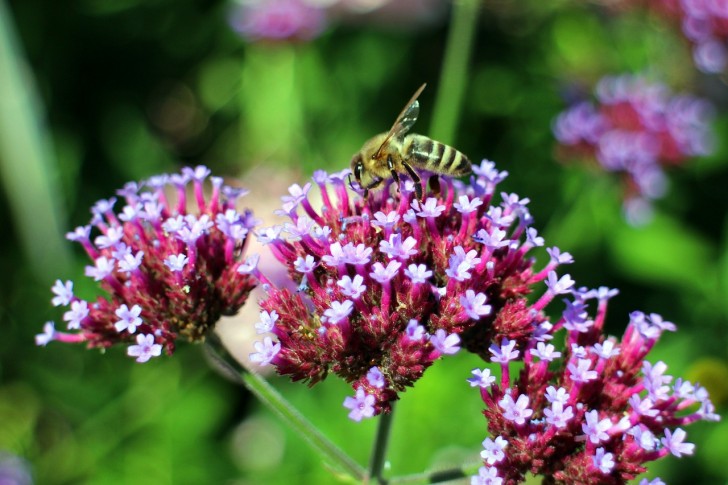
Scabiosa
Scabiosa atropurpurea is a perennial herbaceous plant that blooms from late spring until the first cold autumn: the flowers are single, with a silver gray center and a purple or lilac corolla, but there are also hybrids with purple to white flowers. It can grow very well in flower beds and rock gardens due to the long and abundant blooms, as long as it is in a sunny position.
They are full of nectar, so butterflies, moths and bees are very greedy. To keep them blooming for a long time, just cut the branches with the now withered flowers.
Verbena Bonariensis
It is one of the most famous herbaceous perennials: appreciated for its elegant and slender shape, the very delicate purple flowers that stand on top of long stems are perfect in the middle of a flower bed to create an enchanting and very light spot of color.
It is native to South America and grows well in full sun and well-drained soil. It needs space and air, otherwise it could be a bit suffocated by other plants.
Marigold
A very generous plant, which forms green pads with yellow to brown flowers, arranged in very different combinations on the same plant, giving each specimen an extraordinary appearance. They bloom abundantly in summer, and it is enough to plant a few to find new plants that sprout almost everywhere in the vicinity, even in the joints between the bricks of the floor.
There are many varieties, and those with a more open flower center are preferred by bees, which are able to extract nectar more easily.They love the sun but can also grow where there is some shade, and can also be grown cold climates, as long as the seeds are collected (they are what remains of the flower once dry) and spread them in spring, just covered by a veil of soil.
Marjoram
Another aromatic herb used in cooking, marjoram produces small delicate pink or white flowers, with a stamen that protrudes outward, almost offering pollen to insects, which in fact love it very much. It grows in the sun or partial shade, in well-drained soils, and does not require a lot of watering, just like thyme, oregano or rosemary.
Adding one of these plants will not only be a great help for insects, but also a real pleasure for us, among the colors and scents that we bring to the garden. To make sure they are good for bees and butterflies, however, avoid using pesticide products on them.


